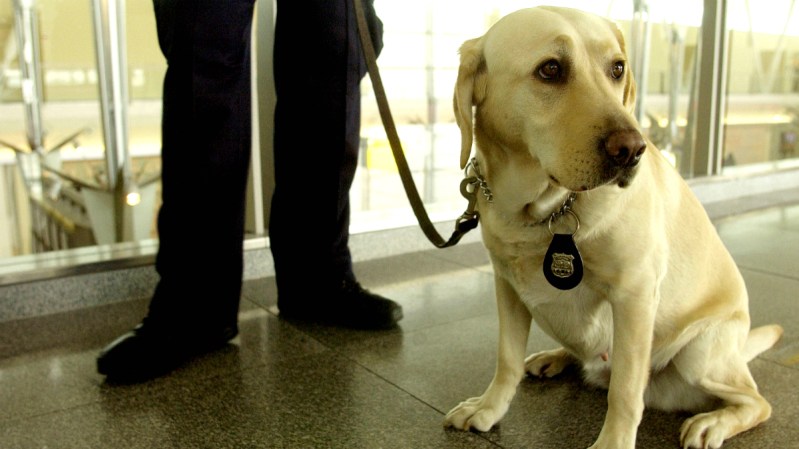
The TSA gets little love from air travelers. It’s not surprising, really. Aside from a hilarious Instagram account and the occasional online fire sale of confiscated goods, what has the Transportation Security Administration done for you lately? Especially considering we see reports indicating that plenty of weapons make it past their screening procedures during test runs anyway.
But, after years of suffering from a serious image problem, it appears the agency has found something everyone can get behind: free puppies.
The TSA estimates that, at any given time, approximately 150 puppies are working their way through the agency’s rigorous 12-week training program to become sniffer dogs. Before their first official screening assignment, they’re required to prove their competency at sniffing out drugs, explosives, and other contraband all while maintaining a good disposition and the willingness to work hard. Roughly 20 percent of recruits just don’t have what it takes — some are simply too nervous, too shy, or too friendly — and are phased into the agency’s Canine Adoption Program. Here, they hope to find a family who can love them in spite of their over-caffeinated personalities, penchant for peeing on things they shouldn’t, and total lack of work ethic.
According to the TSA’s website, “[t]hese dogs are highly active and in most cases, untrained and not housebroken, but with proper training and care, they can be a great addition to families.” In some cases, young dogs pass the training program, work for a few years, then “age out” of the agency because they no longer have the ambition to do the work. So, the adoption program includes pups from two to four years old. The list of dog breeds includes, among others, Labrador Retrievers, German Shepherds, Wirehaired Pointers, German Shorthaired Pointers, and Golden Retrievers. Most of these make great family pets, provided you’re willing to train and care for them properly.
Like any good adoption agency, the TSA wants to ensure their animals find a good home. Their adoption process can be lengthy, as they prefer new puppy parents to meet some common sense requirements:
- There are no same-day adoptions.
- Your home must obey all local pet ordinances (e.g., you can’t be a hoarder with 37 other pets living in your studio apartment).
- Every pet in your home must already be up-to-date with their vaccinations.
- Upon submitting your application, you must have a fenced-in yard.
- You cannot intend to move within the first six months of adopting your dog.
- You must promise to provide your new dog with appropriate care (including companionship, training, vaccinations, and other necessary medical care).
- The agency considers the ages of children in each home.
You must also be willing to travel to Joint Base San Antonio-Lackland in Texas multiple times to start and complete the process. To look into adopting your own “TSA reject” pup, head to the agency’s official Canine Adoption Program website. Be prepared to be patient though. Due to its wild popularity, there may be a waiting list.



